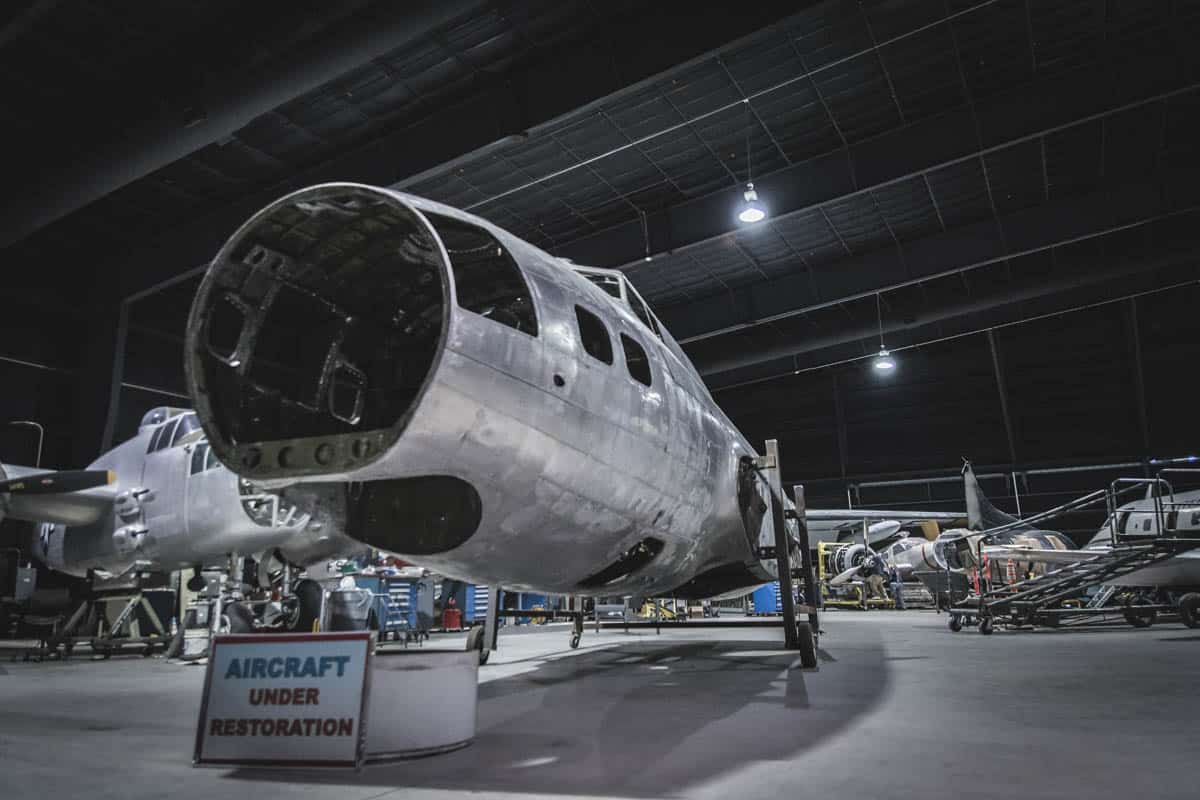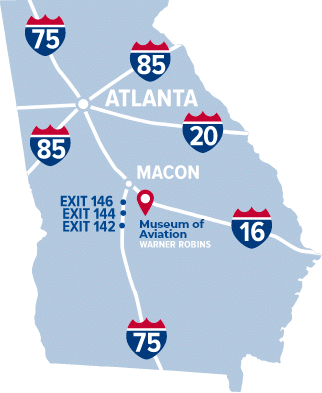I like to think that I know a little bit about aviation history. Granted, most if not all of what I know is self-taught. And it is a drop in the bucket when compared to the knowledge of some of my co-workers here at the Museum. Most mornings, (Wednesdays aside, as I have to be in Atlanta for class that day) around 0830 you can find me doing the walk-around. I, and more often than not another member of the Collections staff, walk through the exhibit space to check lighting, turn on displays and check the general condition of these areas. I mention all of this to say that when walking around I always try to take a little time to read some exhibit text or look closely at a specific object, aircraft or display. It is amazing what you can learn about the things you are around all the time.
Most, if not all, of our current exhibits have been in place since before my arrival here. However, being from the area and also being a history, military and aviation buff I have seen many of them before. I grew up coming to this Museum and there is still so much here to see and learn. The great thing about this Museum, and all museums for that matter, is that what people learn while they are at the museum itself is just the beginning. I believe that one of the most important missions of any museum is to plant a desire in people to expand their knowledge outside of what is found in the museum itself. Freeman Tilden stated that the interpretation of an object (or in this case aircraft) “is the revelation of a larger truth that lies behind any statement of fact.” What does all of this mean exactly? Let’s take a real life example from a recent walk-around and I will show you what I mean.
The C-123K we have here at the Museum (tail # 54-633) could admittedly be in better shape. For now it sits outside, waiting on a future hangar to be built so that it can be moved into a climate controlled environment and better preserved. There is an identification sign in front of the aircraft with a brief and mostly factual history. I personally had never read much about the C-123, other than a brief mention here or there. And I certainly did not go out of my way to do so. After all, there were fast and flashy jets to read about! However, this is where the interpretation principle that Tilden spoke about comes oh-so subtly into play. I became curious about the plane after reading the sign and decided to do some reading about it. It turns out the C-123 has quite the interesting history. It was used extensively during the Vietnam War as a tactical airlift platform. It also was used by the U.S. Coast Guard, U.S. Air Force Special Operations, Air America and the air forces of several other countries. Lt. Col. Joe Jackson, a native of Newnan, Georgia, won the Medal of Honor while flying a C-123 during the Vietnam War. One of the most interesting things I found out about the C-123 is that different variants of it have operated as a glider, with radial engines, with turbo-props and have been jet powered. What an incredible aircraft, and one that a self-admitted aviation enthusiast had previously ignored!

NC-123K/AC-123K were modified to fly night time surveillance missions by Air Force Special Operations
Somewhere in the heavens, Tilden is smiling. I was motivated by what I saw at the Museum to learn more about a subject outside of this facility. I truly hope that visitors here are inspired to do the same. It is my wish that we be a gateway instead of an end destination when it comes to information. In the mean time, the things that catch my eye during the morning walk-around usually end up on our Twitter feed. Take a look, and don’t forget to remember the “larger truth” when you visit your next museum.















